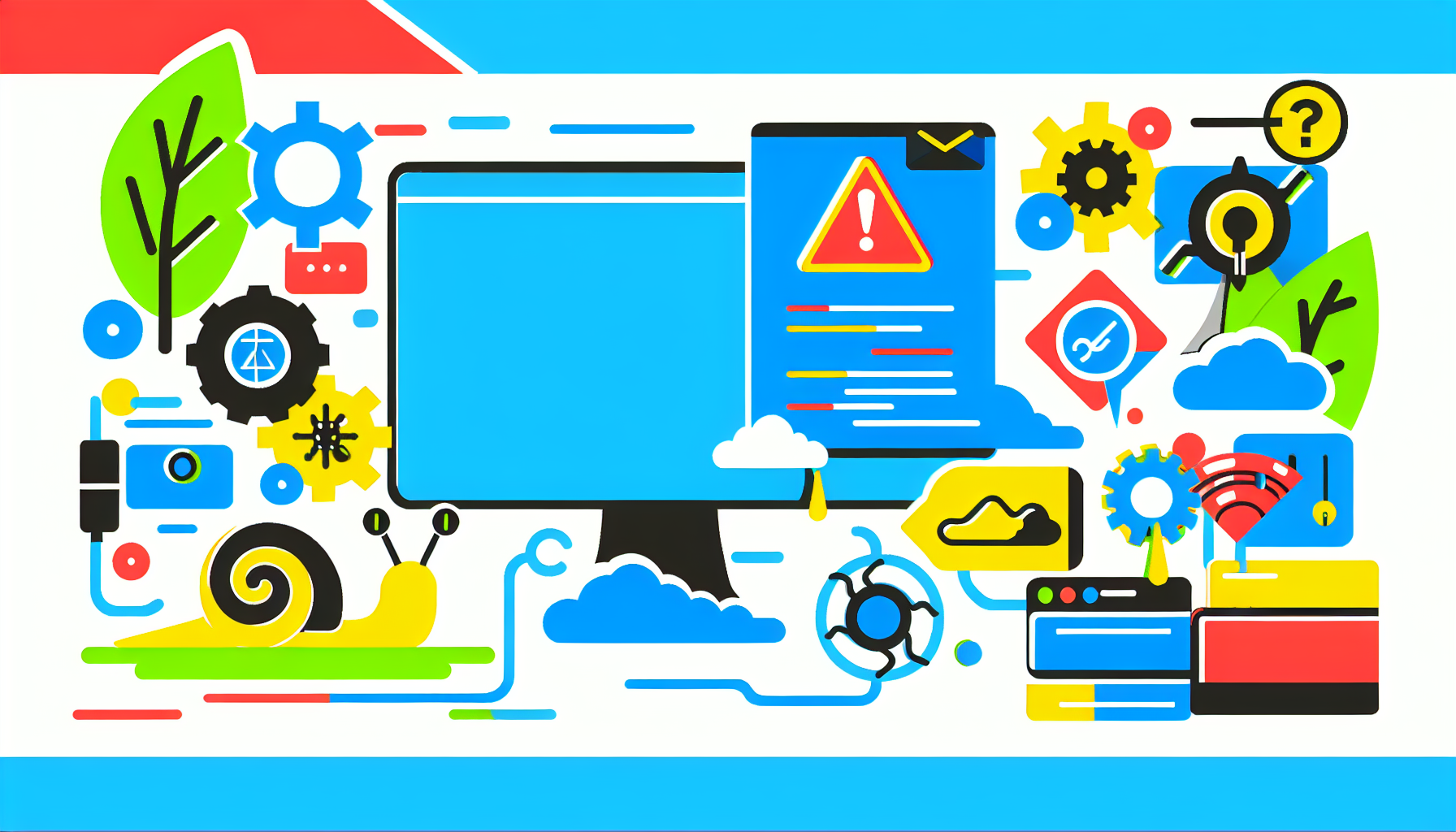Computers are an integral part of our daily lives. Whether you use them for work, education, or entertainment, encountering issues is relatively common. However, many computer problems can be resolved with a little understanding and effort. Below we’ll explore some of the most frequent computer problems and how to tackle them effectively.
1. Slow Performance
Causes:
- Too many background processes: Applications running in the background can slow down your system.
- Insufficient RAM: If your computer doesn’t have enough memory to handle your workload, it may begin to lag.
- Malware: Viruses or other malicious software can significantly impact performance.
Solutions:
- Close unnecessary programs: Use Task Manager (Windows) or Activity Monitor (Mac) to end tasks that aren’t in use.
- Upgrade RAM: If you consistently use memory-intensive applications, consider installing additional RAM.
- Run antivirus scans: Use reputable antivirus software to detect and remove any malware.
2. Unexpected Crashes or Blue Screen of Death (BSOD)
Causes:
- Software conflicts: This can occur when incompatible programs run simultaneously.
- Hardware issues: Failing hardware components can lead to system crashes.
- Driver problems: Outdated or corrupted drivers may cause instability.
Solutions:
- Update drivers: Regularly update your system drivers and operating system to ensure compatibility.
- Run hardware diagnostics: Use built-in diagnostic tools to check the health of your hard drive and other components.
- Boot in Safe Mode: If the crashes persist, try booting in Safe Mode to determine if the problem is software-related.
3. Network Connectivity Issues
Causes:
- Router problems: Issues with your router or modem can disrupt connectivity.
- Outdated network drivers: These can hinder your computer’s ability to connect to the internet.
- Interference: Electronic devices or physical obstructions can affect the wireless signal.
Solutions:
- Restart your router: Sometimes, simply power cycling your router can resolve connectivity problems.
- Update network drivers: Check the manufacturer’s website for updates.
- Check signal strength: If you’re using Wi-Fi, ensure that your device is within range of your router.
4. Software Installation Problems
Causes:
- Compatibility issues: Some software may not be compatible with your operating system.
- Insufficient space: If your hard drive is full, new installations may fail.
- Corrupted installation files: Downloading software from unreliable sources can lead to corruption.
Solutions:
- Check system requirements: Before installing, verify that your computer meets the software’s requirements.
- Free up disk space: Remove unnecessary files, programs, or temporary files to make room.
- Download from trusted sources: Always obtain software from reputable websites or official stores.
5. Printer Issues
Causes:
- Connection problems: Loose or disconnected cables can prevent printers from communicating with your computer.
- Driver issues: Outdated drivers can cause printing errors.
- Paper jams or low ink: Mechanical issues can disrupt printing.
Solutions:
- Check connections: Ensure all cables are securely plugged in, and that your printer is powered on.
- Update printer drivers: Visit the manufacturer’s website to download the latest drivers.
- Perform maintenance: Check for and clear any paper jams, and replace low ink cartridges.
6. Overheating
Causes:
- Dust accumulation: Dust buildup inside the computer can obstruct airflow and cause overheating.
- Faulty fans: Inoperative fans may lead to heat buildup.
- Insufficient ventilation: Lack of space around the computer can impede cooling.
Solutions:
- Clean the internals: Regularly open your computer case (if it’s a desktop) and carefully clean out the dust using compressed air.
- Check airflow: Ensure there’s ample space around your computer components for airflow.
- Replace faulty fans: If fans are malfunctioning, consider replacing them to ensure proper cooling.
7. Blue Light and Display Issues
Causes:
- Driver problems: Video drivers that are outdated can lead to display issues.
- Hardware connections: Loose cables can affect screen performance.
- Physical damage: Cracked screens or damaged components can cause display problems.
Solutions:
- Update video drivers: Regularly check and update your graphics drivers.
- Check connections: Ensure all cables connecting your monitor to the computer are secure.
- Test with another display: If possible, connect your computer to a different monitor to identify whether the problem lies with the monitor or the computer.
8. Password and Login Issues
Causes:
- Forgotten passwords: Most users occasionally forget their passwords.
- User account corruption: This can happen, especially in poorly managed systems.
- Malware: Malicious software could restrict access to your system.
Solutions:
- Use password recovery options: Most systems have built-in recovery options.
- Create a new user account: If your account becomes corrupted, creating a new user account can also resolve login issues.
- Run a malware scan: Ensure your system is safe from potential threats.
FAQs
1. How can I prevent computer problems?
Regular maintenance, such as software updates, disk cleanups, and antivirus scans, can prevent many common computer problems.
2. When should I seek professional help?
If you encounter persistent issues that you cannot resolve, or if the problem may involve hardware repair, seek professional assistance.
3. What should I do if my computer won’t start?
Check for power supply issues, listen for any beeping codes which can indicate hardware issues, and try booting in Safe Mode.
4. Can I perform hardware upgrades myself?
Yes, many hardware upgrades can be done by individuals with basic technical skills. However, if you’re unsure, consult a professional.
5. Is it safe to download software from third-party websites?
Only download software from trusted and reputable sources to avoid malware or corrupted files.
Conclusion
While computers are powerful and essential tools, they are not without their quirks. Understanding common problems and knowing how to address them can save time, money, and frustration. Regular maintenance and vigilant monitoring can help ensure your machine remains in optimal condition, allowing you to focus on what really matters—your work and enjoyment.


